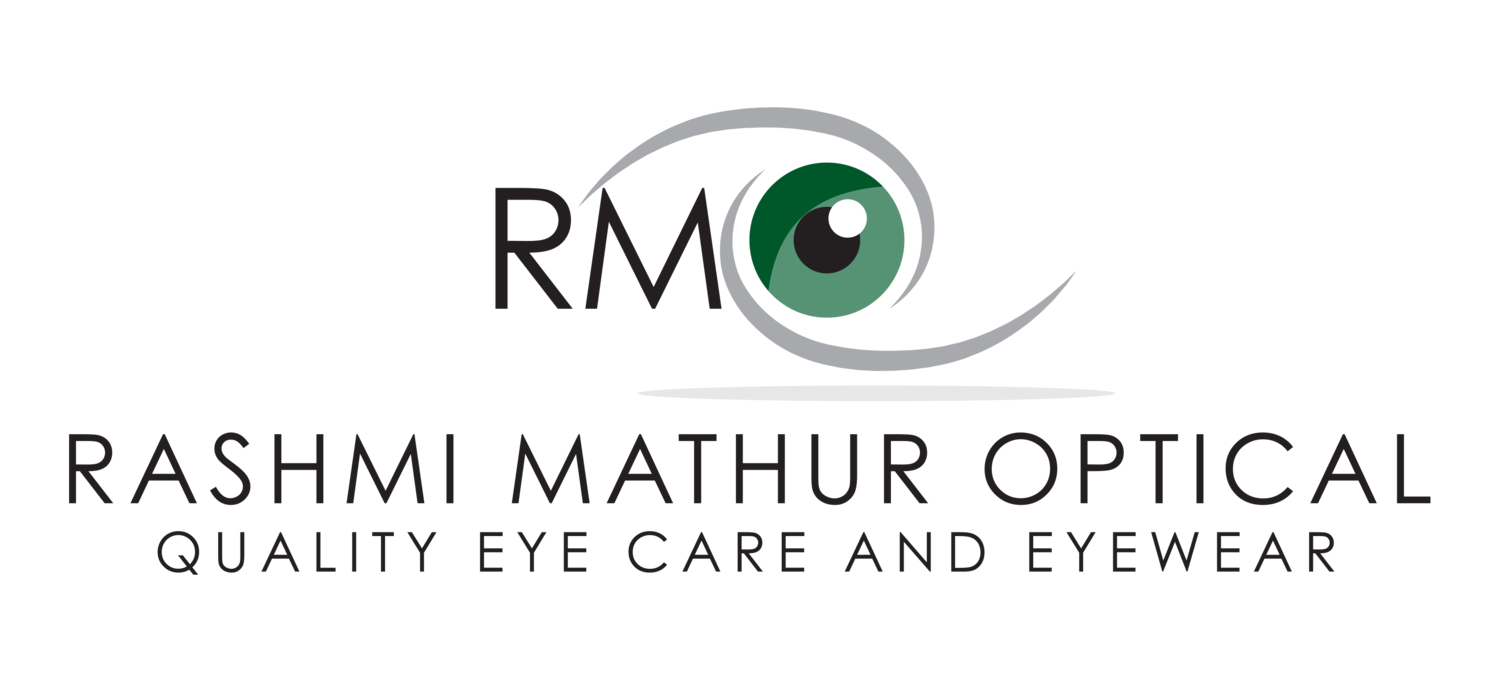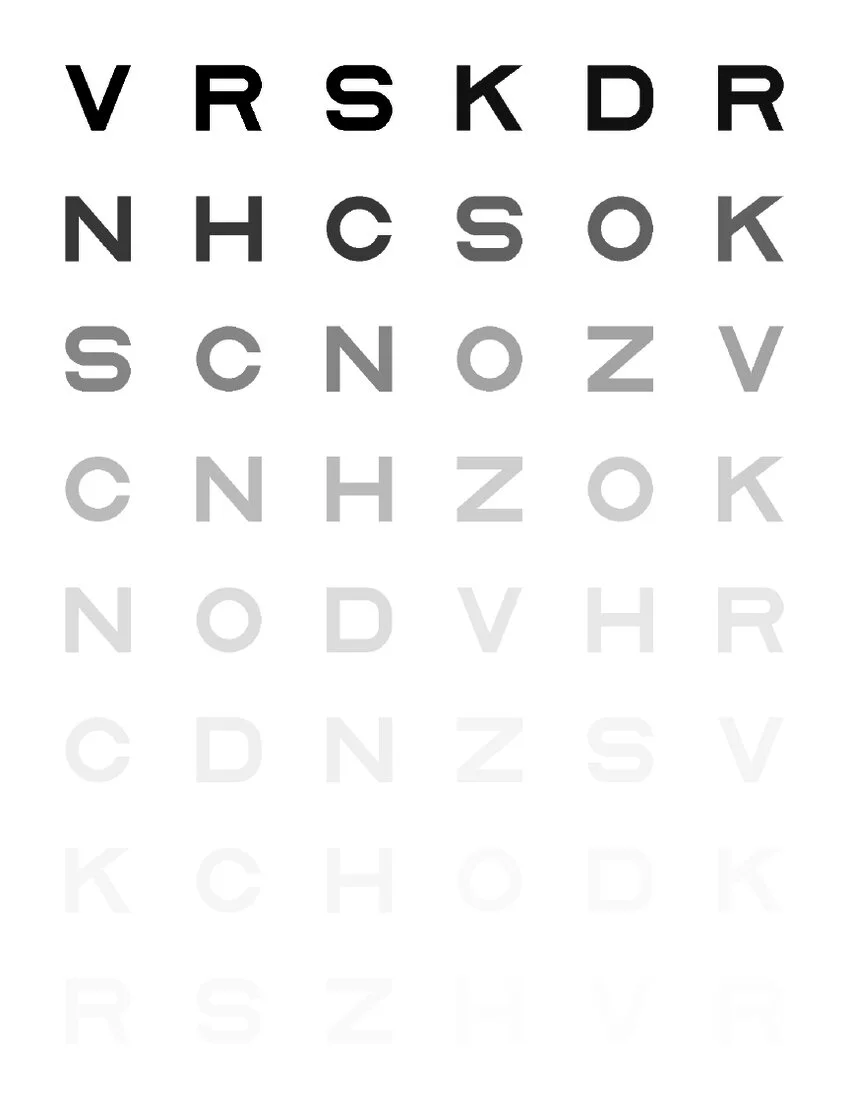Contrast Sensitivity
Contrast sensitivity is an important measure of visual function, especially in situations of low light, rain, fog, or glare, when the contrast between objects and their background is reduced. Low contrast sensitivity may mean difficulty with night driving, seeing pedestrians in poorly lit streets, or eyes that tire more easily while reading or watching TV. It can also increase the risk of a fall if a person does not see a step down from a curb onto a similarly coloured pavement.
Low contrast sensitivity can be a symptom of certain eye conditions like glaucoma, cataract or diabetic retinopathy.
The Pelli-Robson contrast sensitivity chart tests a person’s ability to detect letters that are gradually less contrasted with the white background. This is different from common visual acuity testing in a routine eye exam which measures a person’s ability to recognise smaller and smaller letters on a standard eye chart



